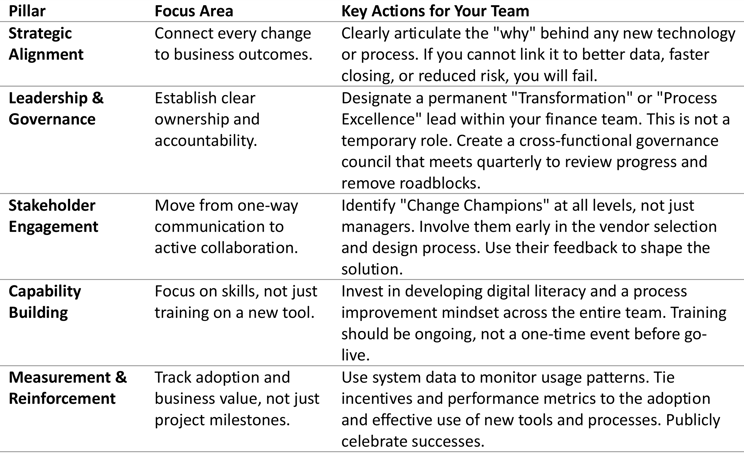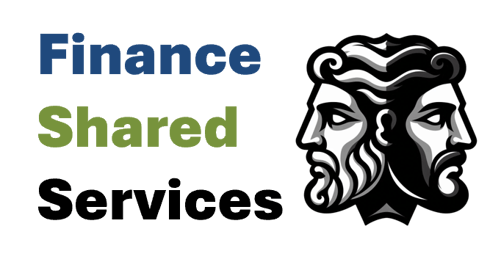The End of "Go-Live" As We Know It: A New Model for Change Management
Your finance shared services organization just implemented a new digital tool. The project team declared victory at "go-live," but six months later, adoption is low, workarounds are rampant, and the promised efficiencies are nowhere in sight. This scenario is common.
The traditional, project-based approach to change management is failing us in an era of continuous process modernization. It is time for a new model.
The old way of thinking about change as a discrete event with a beginning and an end no longer works. Technology is not a one-time implementation; it is a constant evolution. Your strategy for managing change must evolve with it. This requires a shift from managing a project to building a sustainable capability for continuous adaptation.
The Continuous Change Framework
Successful finance leaders are moving away from project-based change management. They are building permanent structures and skills within their teams to handle the constant flow of new tools and process updates. This is a significant shift in thinking. You are not just managing the implementation of a new invoicing tool; you are building a finance department that can absorb any new tool.
Here is a framework to guide this shift


Key Risks You Will Face
Adopting this new approach has its own challenges. You should anticipate and plan for them.
Change Fatigue is Real: Your team can only handle so much transformation at once. Prioritization is essential. You must be disciplined about which initiatives you pursue and provide your team with the support they need. This means actively stopping lower-value projects.
Middle Management Resistance: Often, the strongest resistance comes from middle managers. They may feel their authority is undermined by new, transparent processes or automated controls. You need to address their concerns directly and show them how the changes benefit them specifically, perhaps by freeing them up for more strategic work.
Technology Overload: The sheer number of available finance technology tools can be overwhelming. A poorly integrated tech stack creates more problems than it solves.It is critical to have a clear technology roadmap that prioritizes integration and a seamless user experience. A lack of a clear plan leads to a collection of disconnected point solutions.
Emerging and Future Trends
The nature of change management will continue to evolve. Look ahead to these trends to stay prepared.
Hyper-Personalization of Change: Future change management will tailor communication and training to individual employees based on their role, learning style, and readiness for change.
The Rise of the "Process Owner": The role of the dedicated, empowered process owner will become standard. These individuals will be the permanent stewards of a specific end-to-end process (e.g., Procure-to-Pay). They will be responsible for its performance and continuous improvement, regardless of the underlying technology.
Data-Driven Change Interventions: Your future decisions on when and how to intervene will be data-driven. Instead of relying on anecdotal feedback, you will use process mining and other analytics tools to identify the exact points in a process where users are struggling. This allows for targeted, effective interventions instead of broad, generic training.
Wisdom To Action: The core idea is this: stop treating change as a disruption. Instead, build the capacity for continuous adaptation into the very fabric of your finance shared services organization. Your long-term success depends on it.
